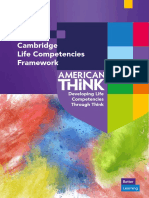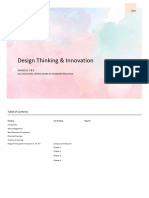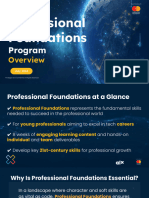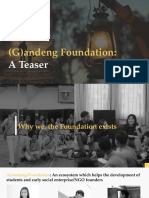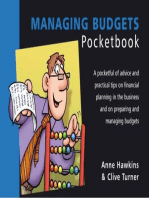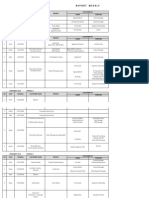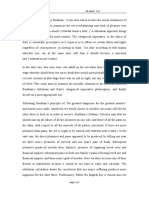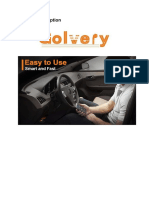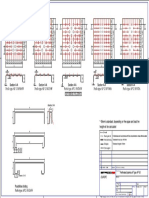Grant Wiggins: Understanding by Design
Grant Wiggins: Understanding by Design
Uploaded by
2273138400yCopyright:
Available Formats
Grant Wiggins: Understanding by Design
Grant Wiggins: Understanding by Design
Uploaded by
2273138400yOriginal Title
Copyright
Available Formats
Share this document
Did you find this document useful?
Is this content inappropriate?
Copyright:
Available Formats
Grant Wiggins: Understanding by Design
Grant Wiggins: Understanding by Design
Uploaded by
2273138400yCopyright:
Available Formats
Grant Wiggins: Understanding by Design
Essential Q’s of UbD
Understanding by What is ‘understanding’- really ‘getting
it’?
Design If that’s what understanding is, what
follows? What does understanding as a
goal require of -
Grant Wiggins ‘Designs’ - our planning?
Summer Institute Learning and teaching activities?
Assessment and feedback to learners?
July 2009
How do we achieve understanding by
design (vs. ‘good fortune’)?
1 2
The big ideas of UbD The big ideas of UbD
Why
UbD big idea If not…
important?
A focus on ‘backward’ ‘Backward’ Plans need to be
well aligned to be
Aimless activity
design: Design effective
& coverage
“Backward” from understanding-based It is the essence of
goals, to solve common lesson planning Understanding: understanding and Students fail to apply,
Transfer the point of poor results on tests
weaknesses schooling
Understanding: that’s how transfer
Learning is fragmented,
happens, makes
A focus on understanding: Meaning making learning more
more difficult,
less engaging
via big ideas connected
Making sense of facts and skills, via big
ideas & transfer of learning 3 4
KEY: 3 Stages of What we typically
(“Backward”) Design (incorrectly) do:
1. Identify desired accomplishments Identify content
Without checking for
alignment
2. Determine acceptable evidence
Brainstorm activities & methods
Without checking for
3. Plan learning experiences alignment
& instruction Come up with an assessment
5 6
© Authentic Education 2009 1
Grant Wiggins: Understanding by Design
Why UbD?
Problem statements:
Too many courses are just ‘coverage’
focused
Most local assessments are not higher-
order
Lesson planning is done in isolation
from long-term goals
Students perform poorly on higher-
order tests and performances
Students do not transfer learning
7 8
Why UbD? 3 useful Q’s to ask
The course is not the textbook
as kids work:
The textbook CANNOT be a
What are you doing? complete course - it is a resource
It is a jam-packed & incoherent resource, to be
Why are we doing it? sold in 50 states (esp. CA, FL, TX)
What will it help us be able Like an encyclopedia, it provides mostly
‘logically’ organized content - not an
to understand/do (that optimally-framed syllabus to achieve specific
matters)? local goals and priorities
9 10
Toward Valid Curriculum: Focus
on Priority outcomes
Why
UbD big idea If not…
important?
worth being “nice to know”
Backward Plans need to be
familiar with Aimless activity
well aligned to be
Design & coverage
effective
important to important It is the essence of
know & do knowledge & skill Understanding: understanding and Students fail to apply,
Transfer the point of poor results on tests
schooling
“big ideas”
Big ideas & core transfer tasks Understanding: that’s how transfer
Learning is fragmented,
happens, makes
& core transfer at the Meaning making learning more
more difficult,
via big ideas less engaging
tasks heart of the subject connected
11 12
© Authentic Education 2009 2
Grant Wiggins: Understanding by Design
UBD Template Content mastery = a means,
shaped by goals
Stage 1 - Desired Results
The
Template– If content mastery is the means,
Designed to what is the desired end?
Stage 2 - Assessment Evidence
Other Evidence:
Performance Tasks Other Evidence
address the What in the future should students
problems we be able to achieve?
identified Why is this worth learning? What of
it?
Stage 3 - Learning Plan
Other Evidence:
13 14
14
Backward Design from Backward Design from
‘Coverage’ ‘Coverage’
“I want students to go to France to -
“I want students to go to 1) see all the important sites in Paris
France to - 2) experience the culture
3) hear and speak the language”
1) see all the important sites in
Paris Note that this is not really a goal
statement. It describes some
2) experience the culture
activities, not any specific
3) hear and speak the language” learnings desired from doing
activities.
15 16
Goal vs. skill Backward from true Goals
“I want students to learn
Students need to learn to
to decode”
decode - along with other skills –
in order to successfully
comprehend and find value in
This is a skill; what’s the point what they read, on their own
of the skill? What’s the goal?
17 18
© Authentic Education 2009 3
Grant Wiggins: Understanding by Design
Backward design from ‘content Backward Design from Goals
coverage’ I want students to leave my course having
understood that –
I want students to understand –
The Constitution was a solution, based on
The Constitution compromise, to real problems of balance
The 3 branches of government and limit of powers - in a long, sometimes
bitter history – with many fights that are
with us and will always be with us.
No - not a learning goal - this
just says what the content is
19 20
Backward Design from the Backward Design from Goals
Understandings Sought
“I want students to come home from France having I want students to be able to use that
learned that… understanding to –
1) What countries build monuments to is a telling cultural
insight. What do Paris monuments tell us? See current struggles between the 3 branches on
2) Americans can appear ‘ugly’ if they are not attentive to how their own and have an informed opinion
some of what is ‘natural’ to us is naturally ‘rude’ to them. Am I
unwittingly acting like an Ugly American?
3) Travel abroad is most rewarding when you take the risk to
use the language, and appear eager to learn from natives”. and transfer that understanding to -
What’s holding me back from trying to speak in French? How
can I more readily take the ‘risk’ and have fun doing so? A modern relevant situation:
Design a government for Iraq
A system of governance for our school
21 22
Content mastery = the means Backward Design:
If content mastery is the means, what is the
end?
I want them to
I want you to learn grammar so that, in the learn____[content] __________ so
long run, you are able, on your own to speak that, in the long run, they will be
and write in any situation with precision, able, on their own to __________
clarity, and maximum impact. [a long-term desired accomplishment, involving
important transfer & extension of learning]
SO: you have to design your courses BACKWARD
from the kinds of communication challenges
that depend upon precise grammar
23 24
© Authentic Education 2009 4
Grant Wiggins: Understanding by Design
Backward Design of AMT - We have 3 Goals
Curriculum:
what follows from the goals Acquire
important
Make
Note that you design backward from knowledge Meaning
and skills of & with “big
the ability of students to use ideas”
‘content’ to make new connections
and transfer Transfer
Learning to
Just like sports: you haven’t ‘gotten new situations
it’ unless you can ‘see it’ and ‘use’ it
‘in the game’ See “Put Understanding First” in Educational Leadership
May 2008, Volume 65, #8 Pages 36-41
25 26
‘Intelligent use’ of content Many teachers mistakenly think
acquired is the ultimate goal that acquisition is the only goal
You acquire knowledge, skill, and Even the MO state standards make this
understanding to use them together clear in distinguishing the Show Me
Standards (performance) from the
effectively foundational Standards (content)
Understand when to use which “The standards are built around the belief
that the success of Missouri’s students
knowledge and skill, and how to use depends on both a solid foundation of
knowledge and skills and the ability of
them all wisely in new situations students to apply their knowledge and skills
to the kinds of problems and decisions they
will likely encounter after they graduate.”
27 28
Many teachers mistakenly
i.e. - not a good way to learn
think that acquisition is the
to drive a car...
only goal
“The academic standards incorporate
and strongly promote the understanding
that active, hands-on learning will
benefit students of all ages. By
integrating and applying basic
knowledge and skills in practical and
challenging ways across all disciplines,
students experience learning that is
more engaging and motivating. Such
learning stays in the mind long after the
tests are over and acts as a springboard
to success beyond the classroom.
29 30
© Authentic Education 2009 5
Grant Wiggins: Understanding by Design
Key problem: wrongly treating
From the MO Standards:
textbook as the syllabus
These standards for students are The textbook is just a collection of
not a curriculum. Rather, the relatively discrete lessons and drills,
standards serve as a blueprint not a purposeful, integrated, and
from which local school districts mission-focused course of study
may write challenging curriculum
to help all students achieve their In the best designs, therefore: the
maximum potential textbook is a resource used with
discretion, not the syllabus
31 32
Why
Intelligent use of textbooks UbD big idea
important?
If not…
1. Syllabus written before textbooks Backward Plans need to be
well aligned to be
Aimless activity
chosen Design effective
& coverage
2. Syllabus is based on Standards, big It is the essence of
ideas, transfer goals Understanding: understanding and
the point of
Students fail to apply,
poor results on tests
Transfer
3. Thus: Which chapters highlighted, schooling
which skimmed, which skipped, given Understanding: that’s how transfer
Learning is fragmented,
happens, makes
the Standards? Meaning making learning more
more difficult,
via big ideas less engaging
connected
4. What activities and assessments
needed beyond what the textbook
supplies?
33 34
Transfer defined and
justified
What is ‘transfer of learning’?
example:
‘Transfer of learning’ is the use of knowledge and
skills (acquired in an earlier context) in a new getting your driver’s license
context. It occurs when a person’s learning in one
situation influences that person’s learning and
performance in other situations.
When transfer of learning occurs, it is in the form
of meanings, expectations, generalizations,
concepts, or insights that are developed in one
learning situation being employed in others
Bigge & Shermis, 1992.
36
35
© Authentic Education 2009 6
Grant Wiggins: Understanding by Design
We often confuse the drills with
The Transfer Question: the game
What should the student be able to do ‘Drills’ - test The ‘game’ - real task
effectively with a repertoire of items The point of the drills
Short-term objective
knowledge and skill, increasingly on their In context, with all its
Out of context
own, in future tasks at the heart of true Discrete, isolated
messiness and interest
expertise? value
element
Requires a repertoire,
set up and prompted
used wisely
for initial simplified
How, then, will transfer ability be learning Not prompted: you judge
developed over the course of the course? Doesn’t transfer to what to do, when
new situations on its
own
37 38
Gradual Release of Teacher ‘Gradual Release’ in History,
Responsibility for example
I do, you watch The transfer goal: you can analyze and
interpret any unfamiliar primary and
I do, you help secondary source document on your own (I.e.
no clues, scaffolds, hints).
You do, I help Gradual release means
You do, I watch you have to learn document-reading strategies and
use them with decreased teacher hints, and learn
from feedback - just like the reader and the athlete
Provide various DBQ practice problems, in which the
This is a general schema for the context variables change and increase the complexity
development of transfer ability at any
age, in any subject 39 40
‘Gradual Release’ in Math, for What research says on
example teaching for transfer
Halpern and Hakel, in Change:
The transfer goal: you can solve any complex “The single most important variable in promoting
unfamiliar problem on your own (I.e. no clues, long-term retention and transfer is "practice at
scaffolds, hints) in which context matters. retrieval." This principle means that learners
Gradual release means need to generate responses, with minimal cues,
you have to learn problem-solving strategies and use repeatedly over time, with varied applications so
them with decreased teacher hints, and learn from that recall becomes fluent and is more likely to
feedback - just like the reader and the athlete
occur across different contexts and content
Provide various practice problems like the NAEP bus
problem, in which the context variables change and domains.”
increase the complexity
41 42
© Authentic Education 2009 7
Grant Wiggins: Understanding by Design
Research on transfer: State tests demand
autonomous transfer!
An especially sensitive way to assess the degree to which students'
learning has prepared them for transfer is to use methods such as
"graduated prompting". This method can be used to assess the amount of Every formal testing situation
help needed for transfer by counting the number and types of prompts
that are necessary before students are able to transfer. requires prior release of teacher
Some learners can transfer after receiving a general prompt such as responsibility:
"Can you think of something you did earlier that might be relevant?"
Other learners need prompts that are much more specific. Tests of Student gets no hints, scaffold, context
transfer that use graduated prompting provide more fine-grained
analysis of learning and its effects on transfer than simple one-shot clues
assessments.
From How People Learn Student has to ‘read strategically’ –
figuring out what to do when.
43 44
44
Irony: the most difficult test
Irony: that’s what the difficult
questions involve TRANSFER, not
problems are - TRANSFER problems
recall
Unfamiliar reading passages Novel-looking versions of
and writing prompts – you math and science problems,
have to transfer all your prior with no clues here from the
learning to a new text, out of textbook or teacher as to
context which skills apply now
45
45 46
46
FCAT - Florida FCAT
47 48
© Authentic Education 2009 8
Grant Wiggins: Understanding by Design
FCAT
49 50
MCAS - math 10th gr FCAT 10th grade Reading
From a Boston Globe article:
The hardest question on the math
section, which just 33 percent got
right, asked students to calculate the
distance between two points.
51 52
MCAS 10th gr English Purpose Question
Edmund Spenser lived from 1552-1599. Read his poem "Sonnet 26" below. Use
the information from the poem to answer the questions.
Sweet is the rose, but grows upon a briar; What is the purpose of the last two lines of the poem?
Sweet is the juniper, but sharp his bough,
Sweet is the eglantine,¹ but pricketh near;
Sweet is the fir bloom, but his branch is rough;
A. to add humor to the poem
5 Sweet is the cypress, but his rind is tough; B. to reassert the speaker’s anger
Sweet is the nut, but bitter is his pill; C. to summarize the poem’s meaning
Sweet is the broom flower, but yet sour enough;
D. to repeat the poem’s visual imagery
And sweet is moly,² but his root is ill.
So every sweet with sour is tempered still,
10 That maketh it be coveted the more:
For easy things, that may be got at will,
Most sorts of men do set but little store.
Why then should I account of little pain,
That endless pleasure shall unto me gain!
State Average: 68%
53 54
© Authentic Education 2009 9
Grant Wiggins: Understanding by Design
NAEP: Dishpan Ducks Typical
by Margaret Springer Response
“Choose the Best Title”
In the story, Rosa enjoys spending time at
the creek behind her apartment building.
Do you think “Rosa’s Creek” would be a
better title than “Dishpan Ducks”? Use
evidence from the story to compare both
titles and to explain which title is better.
55 Copyright © 2008 Mississippi Department of Education 56
NAEP: High Score described
Only 18% of students showed
evidence of full comprehension.
‘Full comprehension’:
These responses provide an opinion about which title
is better by discussing both titles or by providing
multiple pieces of linked information in support of
one title.
Responses may suggest that neither title is better
than the other so long as they provide support for the
opinion.
Responses may provide an alternative title and
support that title with at least two pieces of linked
information.Copyright © 2008 Mississippi Department of Education 57 58
MCAS (MASS) test item: 10th-
grade English reading item
A fellow fourth grader broke the news to me after she saw my effort
on a class assignment involving scissors and construction paper. “You cut out
a purple bluebird,” she said. There was no reproach in her voice, just a certain
puzzlement. Her observation opened my eyes— not that my eyes particularly
help—to the fact that I am colorblind. In the 36 years since, I’ve been trying to
understand what that means. I’m still not sure I do….
Unlike left-handers, however, we seem disinclined
to rally round our deviation from the norm. Thus there’s no ready source of
information about how many presidents, or military heroes, or rock singers
have been colorblind. Based on the law of averages, though, there must have
been some. We are everywhere, trying to cope, trying to blend in. Usually we
succeed. Until someone spots our purple bluebirds. Then the jig is up.
59 60
60
© Authentic Education 2009 10
Grant Wiggins: Understanding by Design
The most wrong item on the Transfer = the real ‘game’ of
state test: 71% incorrect! using content on your own
This selection is best described as -
A. a biography. Applying prior learning to -
B. a scientific article. a novel and increasingly new and unfamiliar-
C. an essay. looking task
D. an investigative report.
An increasingly challenging context & situation
Many students said it could not be an (in terms of purpose, audience, dilemmas,
essay because “it was funny” and “noise” etc.)
because “it had more than 5
paragraphs.”
61
61 62
The problem: local practices –especially in
Note how this goal changes our assessment - typically do not derive from or
view of time use! align with long-term goals
What will we do to achieve the
performance goal - given the very
limited time we have?
We do NOT say: sorry, no time for
performance-based learning and assessment -
there is too much information to cover!
Nor do we make this mistake in the arts,
athletics, writing, speaking a language
63 64
Math unit: “What is Fair? Does math help?” Other question-framing
Intro problem: Four activities/discussions
7th-grade classes had
a race of all the What do we mean when we say that the rules of
students. Devise as a game of chance are “not fair”? What role does
many ways as you can math play in our judgment?
to determine a fair
ranking of the 4 Why is it fair to have one person cut the cake
classes, given the and the other person to choose the piece?
individual runner When is straight majority voting “fair” and
results in the table. when is it “not fair”?
Summarize the 2-3 When is it “fair” to consider an “average” in
top ways you think ranking performance (e.g. salaries, home
would be most fair,
Individual ranking of runners in a prices, batting average) and when is it “unfair”?
and be prepared to
65
discuss your answers… race by all 7th-grade classes 65 66
© Authentic Education 2009 11
Grant Wiggins: Understanding by Design
The content is learned on the Final task in the unit on
way, as a means mean/median/mode
So, what is a fair grade?
What mathematical tools are well Based on our study in this unit of various measures
of central tendency, and the pros and cons of using
suited to judging fairness? “averages” (and other such measures) in various
Measures of central tendency: situations, Propose and defend a “fair” grading
system for use in this school. How should everyone’s
Mean grade in classes be calculated? Why is your system
Median more fair than the current system (or: why is the
Mode current system most fair?)
Quizzes to check for skill development A final reflection on the unit, based on the essential
question “What is fair? Does math help us?”
67 68
Why
How people learn
UbD big idea If not…
important? A major goal of schooling is to prepare students for
flexible adaptation to new problems and settings.
Backward Plans need to be
Aimless activity The ability of students to transfer provides an
well aligned to be important index of learning that can help teachers
Design & coverage
effective
evaluate and improve their instruction.
It is the essence of
Understanding: understanding and Students fail to apply, Students develop flexible understanding of when,
Transfer the point of poor results on tests where, why, and how to use their knowledge to
schooling
solve new problems if they learn how to extract
Understanding: that’s how transfer underlying principles and themes from their learning
Learning is fragmented,
Meaning making
happens, makes
more difficult, exercises.
learning more
less engaging
via big ideas connected
- How People Learn, Natl Academy of Sciences
69 70
To make meaning is to, on A ‘big idea’ is a working and
your own,... effective ‘meaning’ - a useful
‘theory’, ‘schema’ or ‘theme’
Consider detectives at work:
‘Connect the dots’ Who has the motive? Might this be a love triangle, we
Make sense of (seemingly isolated) should follow the money, etc.
experiences, facts, text ‘Theory’ in science/math -
Look for the most parsimonious explanation
Identify the gist, point, purpose, ‘Theme’ -
significance Boy finds girl, boy loses girl, boy finds girl
The American Dream
Draw appropriate inferences History as a history of progress
71 72
© Authentic Education 2009 12
Grant Wiggins: Understanding by Design
Arguably a very big idea in Transfer based on meaningful
driving: ideas permits future learning
“The first object of any act of learning, over and
Anticipate: assume the beyond the pleasure it may give, is that it should
serve us in the future.... In essence, it consists in
other guy is an idiot learning initially not a skill but a general idea
which can then be used as a basis for recognizing
subsequent problems.... This type of transfer is at
the heart of the educational process - the continual
broadening and deepening of knowledge in terms
of...ideas.”
Bruner, Process of Education p. 17
73 74
What idea can help us make
Critical Point!!
sense out of...
Clouds, puddles, disappearing puddles? All the really big ideas are not
Tides, falling objects, phases of the obvious to the novice!
moon, Mars orbit Often counter-intuitive
Salem Witch Trials, Slavery, the Easy to misunderstand
Holocaust, the current economic collapse? Require inference and active intellect,
No number can be divided by zero, not just passive perception
negative numbers, any number to the
zero power = 1? They are ‘obvious’ to the expert
Sarcasm, irony, tall tale? - and therein lies the challenge
[any set of actions by a character] of teaching for understanding!
75 76
Dewey said it decades ago: That’s Why EQs are so
It would be impossible to over-estimate the important
educational importance of arriving at
conceptions: that is, meanings that are Essential Questions signal that
general because applicable in a great variety active inquiry and meaning-making is
of different instances in spite of their the means and key to the goal
difference...they are known points of
Students learn that “acquisition” is
reference by which we get our bearings
when we are plunged into the strange and different from “meaning-making”
unknown. Without this conceptualizing, Meaning-making is “in my head” not “on the
nothing is gained that can be carried over to page” (QAR)
the better understanding of new experiences. Students learn that many schemas,
Dewey, 1933, p. 153 theories need testing - and changing!
77 78
© Authentic Education 2009 13
Grant Wiggins: Understanding by Design
1st Stage of
“Backward” Design New Pearson Lit. Series
Is truth the same for everyone?
1. Identify desired accomplishments Can all conflicts be resolved?
How much information is enough?
2. Determine acceptable evidence What is the secret to reaching
someone with words?
3. Plan learning experiences Is it our differences or similarities
& instruction that matter most?
Are yesterday’s heroes important
79 today? 80
Key Qs: From Polya How to From new Magruder’s Gov’t
Solve It text
What is the unknown? What are the data? What is How much power should the federal
the condition? government have?
Have you seen it before? Or have you seen the What are the most pressing social problems and
same problem in a slightly different form? how should they be addressed by government?
Can you see clearly that [each] step is correct? When should America go to war?
Can you prove that it is correct?
What is the proper balance between free
Can you check the result? Can you check the enterprise and government regulation of the
argument? economy?
Can you derive the solution differently? What is the proper balance between national
Can you use the result, or the method, for some security and civil liberties?
other problem? What is America’s role in the world?
81 82
From Big Ideas to
Understandings vs. facts
Understandings about them
Understandings - STAGE 1 Knowledge - STAGE 1
Conclusions, inferences - Facts to be taken and An understanding is a “moral of the
statements that sum up learned as such
the unobvious meaning story” about the big ideas
Settled knowledge,
of facts or experiences
accepted as true or What specific insights will students take away about the the
Specific full-sentence
given meaning of ‘content’ via big ideas?
generalizations about the
Obvious, unproblematic Understandings summarize the desired insights we want
use of facts and skills - a
and straightforward students to realize
statement of wise but
arguable strategy claims An understanding may be that there IS NO agreed-upon
understanding! (e.g. in confusing data or historical
Summary insights, rules
interpretation)
of thumb, aphorisms -
“the moral of the story”
as someone sees it
107ff
83 84
© Authentic Education 2009 14
Grant Wiggins: Understanding by Design
pp.117
Toward ‘understandings’ via
“Equivalence”
misunderstandings!
Understandings about this ‘big idea’ in math:
Quantities can be converted into many equal
Recall we noted above that a big
symbolic forms: fractions - decimals; factoring and idea has an unobvious, perhaps even
regrouping, etc. strange and counter-intuitive aspect
The essence of problem solving is finding the most
useful equivalences - I.e. turning complex into to it -
simple, unfamiliar into familiar, unknown into The water cycle vs. “it is gone”
known.
“Discuss with the author” even though the
The same mathematical ideas can be represented
concretely, graphically, or symbolically. Context author cannot be there
determines which is most appropriate.
85 86
Sample Reading
Other Misconceptions in math
Misconceptions
From 2061 Benchmarks (AAAS): All the answers can be found by ‘looking it up
Variables Students have difficulty understanding in the book’
how symbols are used in algebra. They are often If I just keep scanning the lines, it will
unaware of the arbitrariness of the letters chosen eventually make sense
to represent variables in equations. Middle-school If I know all the words, I know what the text
and high-school students may regard the letters as means
shorthand for single objects, or as specific but The teacher, of course, knows ‘the’ answer to
unknown numbers before they understand them as questions about what the book really means
representations of variables. These difficulties
The book means what any reader says it
tend to persist even after instruction in algebra
means
and are evident even in college students.
87 88
pp.136ff
2nd Stage of
Sample History Misconceptions “Backward” Design
History is about the facts of what
happened
1. Identify desired accomplishments
We know what happened - or at least
someone does; we can look it up and
settle the dispute. 2. Determine acceptable evidence
The people in the past believed odd and
primitive things; we know better.
3. Plan learning experiences
There is one major cause for an effect,
& instruction
and the key cause is obvious.
Maps are objective facts.
89 90
© Authentic Education 2009 15
Grant Wiggins: Understanding by Design
Stage 2: What follows for What assessment for
assessment? understanding implies
Bloom and common sense say:
The analytic challenge is to identify the Your thinking and support, not just your answer -
“show your work”, the dissertation and its defense
ULTIMATE tasks that embody the bottom-
The ability to apply what you have learned to a
line learning goals/purposes novel problem or situation
What real-world important tasks epitomize the Goal? Being able to perform, on your own, with minimal
What projects should a student who has met the Standard prompting - to do the subject
be able to do well?
The ability to adjust, as needed
What is Mission Accomplished? What challenges in the world
should students be prepared to handle and accomplish? The ability draw inferences, on your own, from the
facts: generalize, compare & contrast, etc.
The ability to argue/critique/evaluate the work of
others as well as one’s own
91 92
2 validity questions for a Not the format that matters
practical ‘test of the test’:
but what we are looking for!
1. Could the test be passed, but
without understanding? Regardless of the type of test (quiz, essay,
observation),
2. Could the specific test
what should we look for?
performance be poor, but the
where should we look?
student still reveal understanding in
various ways before, during, and in order to say - they got it (or didn’t)?
after?
! The goal is to answer NO to both
93 94
A unit example, geography:
Why There? (2)
“Why there?”
1. Consider: give each student a large 2. Acquire: Read the relevant
topographical map of the US (or your state,
or an ancient region), and ask them to textbook sections on the relation
identify places where big cities are most between geography and
likely and least likely to be & say why.
2. Now, give them a road map and ask of
population settlement.
various cities: Why there? What’s your Quiz on the chapter - re: regions, settlement,
‘theory’ about settlement & geography? geography
95 96
© Authentic Education 2009 16
Grant Wiggins: Understanding by Design
Why There (4): Transfer Your
Why there? (3)
Learning
4. Civic planning. You are a geographer hired to
make predictions about population trends over
Further inquiry: test your the next century, based on maps, climate and
theory trade data.
What are the capitals of New Jersey, New York,
Maryland, Illinois, and California; and why are they Using your understanding of the links between
there?
Study local growth over the past 150 years in the
geography, settlement, migration, trade, and
state: why here and not there? transportation: advise the planning agencies of
Jigsaw research & discussion the government on what they can expect.
Generalize - test your theory again (Students can be presented with modern maps of counties/states - OR
maps of colonial times or ancient river civilizations that they have not
yet studied)
97 98
Framing a course in World Build Backward from key tasks
History by transfer tasks: in the subject: (‘decathlon’)
1. The design of a tour of the world’s most holy sites
2. The writing of a Bill of Rights for use in Afghanistan, Iraq, and other new
democracies Construct a valid story from varied (incomplete &
3. Report on Latin America to the Secretary of State: Policy analysis and conflicting) sources [social studies, history]
background report on a Latin American country. What should be our current policy,
and how effective has recent policy with that country been? Find a pattern/relation/function in messy data, with
4. Collect and analyze media reports from the Internet on other countries’ views of outliers and “error” [math, science]
US policies in the Middle East. Do we understand the issues? Read and make meaning, on your own, of a puzzling text
5. Provide a briefing on the AIDS crisis in Africa and how American policy has
helped as well as hurt the situation
- a tall tale, “A Modest Proposal,” etc.[English, Language
6. Take part in a model UN on the issue of terrorism: you will be part of a group of
Arts]
2-3, representing a country, and you will try to pass a Security Council resolution on Communicate successfully in challenging situations, with
terrorism
speakers who disagree with you or have completely
10. Russia: friend or foe? Provide the Foreign Relations Committee with a briefing
on the current state of Russia, the last century of American-Russian relations, and different backgrounds [World Languages, Language Arts]
future worries and possibilities
11. India and outsourcing: to what extent is the global economy a good thing for
America? India? India’s neighbors?
99 100
Research on assessment of 3rd Stage of
transfer: “Backward” Design
An especially sensitive way to assess the degree to which
students' learning has prepared them for transfer is to use
methods such as "graduated prompting". This method can be 1. Identify desired accomplishments
used to assess the amount of help needed for transfer by
counting the number and types of prompts that are
necessary before students are able to transfer.
2. Determine acceptable evidence
Some learners can transfer after receiving a general
prompt such as "Can you think of something you did earlier
that might be relevant?" Other learners need prompts that
are much more specific. Tests of transfer that use 3. Plan learning experiences
graduated prompting provide more fine-grained analysis of & instruction
learning and its effects on transfer than simple one-shot
assessments.
From How People Learn
101 102
© Authentic Education 2009 17
Grant Wiggins: Understanding by Design
Stage 3 Design Standard What did the ‘best design’
exercise show us?
E
F E
There are certain basic criteria that
F N
good instructional design meets:
E G Meaningful, relevant, engaging & thought-provoking
C and A work
T G Clear performance goals, with models
I I Lots of feedback and opportunities to use it
V N Options for personalization & collaboration
E G Hands-on, real-world challenges - learn by doing
‘Just-in-time’ instruction that focuses on useful
processes and helpful sequences for task mastery
103 104
Eric Mazur’s Physics Courses at
Autonomy as the goal of HS
Harvard
I do, you watch
After fifteen minutes, Mazur poses a question
I do, you help that requires conceptual understanding (such as
estimating the displacement of a toy boat in a
You do, I help bathtub).
You do, I watch Students write their answers on a sheet and identify their levels
of confidence in the answer.
In pairs, attempt to convince others of their answers.
This is a general schema for the Students then answer the question a second time and report
their confidence levels again.
development of transfer ability at any age, The whole class is polled again about their answers.
in any subject
105 106
Findings: less “lecture” = Some ‘moves’ students need to
better results learn and to self-activate:
To come to understand, learners need to be coached in
Mazur has collected data on the impact of his and eventually self-activate independently –
approach on several outcome measures over a Study & Research skills & questioning
decade vs. traditional lecture - Compare and contrast different views; anticipate alternative perspectives
students performed considerably better on standard physics Generalize and extend learning - develop, test, refine a thesis
course exams Transfer learning to new and realistically ‘messy’ situations
students scored higher on measures of traditional problem Frame/clarify genuine (non-routine and ambiguous) problems and solve
solving them
Students scored much higher in conceptual understanding Monitor and adjust to achieve performance goals
Find and consider relevant causes/effects; Ask: “What if?” and similar
Mazur: “No lecturer, however engaging and lucid, imaginative/empathy Q’s
can achieve this level of improvement and Question a text or experience critically but respectfully
participation simply by speaking.” Verify general claims made by teacher & text
107 108
© Authentic Education 2009 18
Grant Wiggins: Understanding by Design
7 Recommendations deliberately develop student
autonomy over time
1. Design backward from Standards, not CPI’s
2. Design backward from Transfer & Integrated
Performance, not Topics Almost every HS is arguably failing
3. Make clear the job is NOT marching thru textbook to develop the autonomy students
4. Face the reality of boredom in HS need in college and the workplace.
5. Face widespread myths and ignorance about tests Merely being told what to do and being
and best practice
assigned lots of content will never develop
6. Develop Autonomy over time - prepare kids for
college and workplace
autonomous decision-making about studying,
research, and use of time
7. Demand that each department have a mission, act
on it, and monitor it constantly via formative No college schedule looks like HS schedules
assessments In college, most work is done outside of class,
based on having learned how to learn
109 110
Promoting Learner Autonomy
The professional reply is NOT:
T
Scaffolded Instruction Gradual Release
“We don’t have enough time!”
e
a
c
h RATHER the ‘backward design’
e
r question is: What should we do
D
i
with the time we have in order
r
e
to accomplish autonomous
c
t
transfer - college and work
i
o
ready?
n
Student autonomy 111 112
Harvard
The aim of a liberal education is to unsettle presumptions, to
defamiliarize the familiar, to reveal what is going on beneath and
example: behind appearances, to disorient young people and to help them
to find ways to re-orient themselves. A liberal education aims to
getting your driver’s license accomplish these things by questioning assumptions, by inducing
self-reflection, by teaching students to think critically and
analytically, by exposing them to the sense of alienation
produced by encounters with radically different historical
moments and cultural formations and with phenomena that
exceed their, and even our own, capacity fully to understand.
From Harvard’s new statement of purpose for undergraduate education
113 114
© Authentic Education 2009 19
Grant Wiggins: Understanding by Design
Skidmore Scarsdale HS English (cont.)
The Skidmore English department invites students
to consider questions and to frame their own.
Throughout the curriculum, English majors learn to
read closely, think critically, challenge Our approach, which is student-centered,
assumptions, practice methods of interpretation
and research, analyze the formal qualities of texts, becomes more student-directed over the four
approach texts from various perspectives, place years. We aim for students to become
texts in various contexts, and write with clarity,
coherence, and precision. As the English major increasingly responsible for their own
progresses from introductory to capstone courses, education, to become independent learners
students are offered increasingly sophisticated and
elaborate writing and analytic tasks and called
conscious of what they need to know and
upon to perform steadily more original, inventive, knowledgeable about how to learn it.
independent work.
115 116
Plus ça change...from
The brutal facts of boredom Goodlad’s A Place Called
“ Today's high school students say they are bored
in class because they dislike the material and School over 25 years ago
experience inadequate teacher interaction, “The only subjects getting ratings of ‘very
according to a special report from the High School interesting’ from more than a third of junior
Survey of Student Engagement (HSSSE). The and senior high school students taking them
findings show that 2 out of 3 students are were the arts, vocational education, physical
bored in class every day, while 17 percent say education and foreign languages.”
they are bored in every class.”
More than 81,000 students responded to the annual survey. HSSSE was “It was especially distressing to see that the
administered in 110 high schools, ranging in size from 37 students to nearly
4,000, across 26 states.
kinds of classroom practices found most often
in school were liked by small percentages of
students.”
117 118
Note how this relates to the
Relation to boredom
issue of boredom
When the work is passive and irrelevant
From Goodlad’s A Place Called School, 25 - regardless of how theoretically
years ago: important the content - a majority of
students will not engage.
"What do students perceive themselves to be learning? We asked
[them] to write down the most important thing learned in school There is NO excuse for boring classes - it
subjects...Most commonly students listed a fact or topic...
is not an inherent quality of learning
Noticeably absent were responses implying important content in school
the realization of having acquired some it is a sign of poor curriculum design and lack of
intellectual power… awareness of best practice in instruction - both in our
control
119 120
© Authentic Education 2009 20
Grant Wiggins: Understanding by Design
From the research: one of Research in HS-college
chief findings - achievement
“The teaching of metacognitive skills should be This study relates the performance of college students in introductory science
courses to the amount of content covered in their high school science courses.
integrated into the curriculum. Because The sample includes 8310 students in introductory biology, chemistry, or
metacognition often takes the form of an internal physics courses in 55 randomly chosen U.S. colleges and universities.
dialogue, many students may be unaware of its Students who reported covering at least 1 major topic in depth, for a month or
importance unless the processes are explicitly longer, in high school were found to earn higher grades in college science than
did students who reported no coverage in depth. Students reporting breadth in
emphasized by teachers. their high school course, covering all major topics, did not appear to have any
advantage in chemistry or physics and a significant disadvantage in biology.
Care was taken to account for significant covariates: socioeconomic variables,
“Research has demonstrated that children can be English and mathematics proficiency, and rigor of their preparatory high
taught these strategies, including the ability to science course.
predict outcomes, explain to oneself, note failures to We conclude that teachers should use their judgment to reduce coverage in
understand, activate background knowledge, plan high school science courses and aim for mastery by extending at least 1 topic
in depth over an extended period of time.
ahead, and apportion time and memory… © 2008 Wiley Periodicals, Inc. Sci Ed 1 – 29, 2008
How People Learn, p. 14, 21
122
121 122
AP History Redesign AP History Redesign
The redesign project will produce a more inclusive and more
engaging program of study for each discipline. To achieve this,
The process of AP history redesign has
the commissions have identified: been informed by:
A coherent and conceptual framework for the course appropriate to the A College Curriculum Study conducted to identify
field of history
opportunities to improve AP by incorporating some
Key historical themes for each course that are to be studied in depth
of the best examples of successful college
The essential historical thinking skills that are to be supported by
instruction and measured on the exams Teaching practices that are curriculum
most successful at developing understanding National and select state standards
Potential ways to incorporate more fully the study of historical Established learning science approaches to
scholarship into the courses curriculum and assessment design -
Learning and Understanding (National Research Council,
2002)
Understanding by Design (Wiggins and McTighe, 2005)
123 124
123 124
Stop asking if we’re there
yet. We’re nomads, for further information...
for crying out loud! Contact me:
grant@authenticeducation.org
Resources:
www.authenticeducation.org
Summer Institutes
online courses: www.authenticeducationonline.org
- BIG IDEAS: free online journal for information and resources, blog,
samples, links
Curriculum Framer: electronic design template and 100+ model
units: http://demo.curriculum-framer.com KEY: framer
Pearson/ubd site: http://dev.pearsonubd.com/programs.htm
125 126
126
© Authentic Education 2009 21
You might also like
- EDCI 672 - Case Study 2 - Suzie Beckett & Adam McSweenyDocument12 pagesEDCI 672 - Case Study 2 - Suzie Beckett & Adam McSweenySara VillegasNo ratings yet
- CAS Project Proposal FormDocument2 pagesCAS Project Proposal FormprandayNo ratings yet
- UbD in A NutshellDocument4 pagesUbD in A NutshellTeachThoughtNo ratings yet
- Understanding by DesignDocument80 pagesUnderstanding by DesignMaria PenaNo ratings yet
- Planning and Organizing - Advik FormatDocument21 pagesPlanning and Organizing - Advik FormatIurie BogdanoviciNo ratings yet
- UbD Workshop Part 3Document30 pagesUbD Workshop Part 3RossNo ratings yet
- Lesson 2: Designing Dreams: TOPIC: Financial PlanningDocument11 pagesLesson 2: Designing Dreams: TOPIC: Financial PlanningEltun AslanovNo ratings yet
- X04-Ar Books - OUR ExperiencesDocument8 pagesX04-Ar Books - OUR ExperiencesVipin KanojiaNo ratings yet
- Fifi Design Present Person Oriented NewDocument2 pagesFifi Design Present Person Oriented NewFifi AinNo ratings yet
- Cbar-Presentation-Exit-Tickets 1Document40 pagesCbar-Presentation-Exit-Tickets 1api-534778534No ratings yet
- ch05 2023 Training and Career DevelopmentDocument18 pagesch05 2023 Training and Career DevelopmentAbram TinNo ratings yet
- SELF ASSESMENT AssignmntDocument9 pagesSELF ASSESMENT AssignmntamarnadhNo ratings yet
- ASCD UBD WhitepaperDocument15 pagesASCD UBD WhitepaperLukluul MaknuunNo ratings yet
- Asler 2Document2 pagesAsler 2Albert Joe AbrinaNo ratings yet
- Which Are Those Useful Tools and or Strategies From Virtual WorkDocument9 pagesWhich Are Those Useful Tools and or Strategies From Virtual WorkMariana SantolínNo ratings yet
- Artificial - Intelligence - IX Pedagogical Plan UpdateDocument15 pagesArtificial - Intelligence - IX Pedagogical Plan UpdateChetana MahajanNo ratings yet
- Evaluate and Review The Effectiveness and Impact of My LearningDocument13 pagesEvaluate and Review The Effectiveness and Impact of My LearningtrivikramnathNo ratings yet
- 5 Instructional Design Principles You Can't Do WithoutDocument4 pages5 Instructional Design Principles You Can't Do Withoutmohiyul2751No ratings yet
- Abhijeet SarkarDocument2 pagesAbhijeet SarkarGowhar Parveen MallickNo ratings yet
- Chap 10Document34 pagesChap 1031211022392No ratings yet
- Workshop 2Document2 pagesWorkshop 2Madelyn Ramos GabitoNo ratings yet
- 2024 - Module 2 Team Work and Planning - HandoutDocument36 pages2024 - Module 2 Team Work and Planning - Handoutanle30092004No ratings yet
- 2024 - Module 2 Team Work and Planning - HandoutDocument36 pages2024 - Module 2 Team Work and Planning - HandoutPhương Vy NguyễnNo ratings yet
- Wiggins Mctighe Ubd Nutshell PDFDocument4 pagesWiggins Mctighe Ubd Nutshell PDFNeda KahnNo ratings yet
- Creative Problem Solving - UploadDocument24 pagesCreative Problem Solving - UploadAdiet Pratama100% (1)
- Individual Self Assessment and Personal Development PlanDocument5 pagesIndividual Self Assessment and Personal Development PlanamarnadhNo ratings yet
- ThinkAmerican CLC Correlation Brochure - DigitalDocument9 pagesThinkAmerican CLC Correlation Brochure - DigitalCreilyNo ratings yet
- A3 Teachers Manual DT I 6 Grade TM001!07!2022Document55 pagesA3 Teachers Manual DT I 6 Grade TM001!07!2022srikant ramanNo ratings yet
- Summer Life Skills - Week 1 Day 1 - RevisedDocument34 pagesSummer Life Skills - Week 1 Day 1 - Revisedxbjjh94mctNo ratings yet
- CLC - Intro - Teh Cambridge Life Competencies FrameworkDocument11 pagesCLC - Intro - Teh Cambridge Life Competencies FrameworkFernando AquizeNo ratings yet
- Workshop 2 Group 5Document5 pagesWorkshop 2 Group 5Eden AniversarioNo ratings yet
- Final Year Mihai Alexandru OnicaDocument10 pagesFinal Year Mihai Alexandru OnicaOnica AlexNo ratings yet
- MYP Unit Planner 103.01 and 102.01Document13 pagesMYP Unit Planner 103.01 and 102.01潘卫平No ratings yet
- Isd Addie 2.0 Brief (02.10.2012)Document27 pagesIsd Addie 2.0 Brief (02.10.2012)desiflirtNo ratings yet
- Assessment in Flexible Learning - Part 2 PDFDocument39 pagesAssessment in Flexible Learning - Part 2 PDFLeonardo AsumbradoNo ratings yet
- SIBG Customer Education - Instructional Design Best PracticesDocument18 pagesSIBG Customer Education - Instructional Design Best Practicesramki240No ratings yet
- LXD Blueprint For Design LeadsDocument3 pagesLXD Blueprint For Design LeadsMaddie_2No ratings yet
- Bright Spark Design Thinking Full WorksheetDocument15 pagesBright Spark Design Thinking Full Worksheetsujal patelNo ratings yet
- Mentoring TemplateDocument13 pagesMentoring Templateshalina100% (1)
- Instructional Design ApproachDocument15 pagesInstructional Design ApproachYou MingNo ratings yet
- How To Measure Business AcumenDocument4 pagesHow To Measure Business AcumenKunto Dwi WicaksonoNo ratings yet
- Act 4-7Document5 pagesAct 4-7Alexa Sofiyah AcordaNo ratings yet
- SummaryNotes MeasureWhatMattersDocument8 pagesSummaryNotes MeasureWhatMattersabhinava.1150% (4)
- Foundations Program (2-Month Version)Document24 pagesFoundations Program (2-Month Version)samuelNo ratings yet
- Managers Recruitment Guideline - Teaser 1.0Document33 pagesManagers Recruitment Guideline - Teaser 1.0Dennis ChanNo ratings yet
- Tagihan RPPDocument74 pagesTagihan RPPselviNo ratings yet
- Project Scope StatementDocument10 pagesProject Scope StatementsadiaNo ratings yet
- NDPL 1Document40 pagesNDPL 1floraNo ratings yet
- First oDocument1 pageFirst og-ipgp22294240No ratings yet
- Dei Presentation TLP 2022 HandoutDocument6 pagesDei Presentation TLP 2022 Handoutapi-556746492No ratings yet
- Manager Building Better Goals 2024 - TranslationsDocument11 pagesManager Building Better Goals 2024 - Translationschrist.albanNo ratings yet
- Gee003 - PPT - Module 1 - Cognitive and EthicsDocument25 pagesGee003 - PPT - Module 1 - Cognitive and EthicsIvangelo CaballeroNo ratings yet
- Outcome-Based Education (OBE)Document43 pagesOutcome-Based Education (OBE)Machino ChelseaNo ratings yet
- 26 Personal Effectiveness - 6slDocument3 pages26 Personal Effectiveness - 6slZohair HumayunNo ratings yet
- MYP Unit Planner: Inquiry: Establishing The Purpose of The UnitDocument4 pagesMYP Unit Planner: Inquiry: Establishing The Purpose of The UnitdonalddogNo ratings yet
- Principles of Teaching 2 Report FinalDocument14 pagesPrinciples of Teaching 2 Report FinalDwayneGeraldNo ratings yet
- Personality Development and Applied Ethics1Document5 pagesPersonality Development and Applied Ethics1geo largoNo ratings yet
- Norman's Stages of Action: Problem ScenariosDocument12 pagesNorman's Stages of Action: Problem ScenariosBaraveli KakuniNo ratings yet
- Report MingguanDocument84 pagesReport MingguanMakaylaa FayNo ratings yet
- Managerial Economics in A Global Economy, 5th Edition by Dominick SalvatoreDocument21 pagesManagerial Economics in A Global Economy, 5th Edition by Dominick SalvatoreDianja ApriandaNo ratings yet
- Individualized Education Program (With Secondary Transition)Document18 pagesIndividualized Education Program (With Secondary Transition)api-321851345No ratings yet
- 978 1 5275 3649 4 SampleDocument30 pages978 1 5275 3649 4 SampleengineerNo ratings yet
- Dudley V ParkerDocument7 pagesDudley V ParkerHe JiaxinNo ratings yet
- Criticisms of GlobalizationDocument4 pagesCriticisms of GlobalizationSu NgNo ratings yet
- IRFC ListofDesignatedBranches 03042023Document9 pagesIRFC ListofDesignatedBranches 03042023Saikat RoyNo ratings yet
- Green AccountingDocument4 pagesGreen AccountingUman Miftah SajidinNo ratings yet
- Effect of Preprocessing Techniques On Pearl Millet PDFDocument9 pagesEffect of Preprocessing Techniques On Pearl Millet PDFRama RaoNo ratings yet
- Contemplating The End of The UniverseDocument3 pagesContemplating The End of The UniverseearllaurenceboyoseNo ratings yet
- Calleja V CADocument3 pagesCalleja V CAKarenliambrycejego RagragioNo ratings yet
- Marketing Research On Customer Satisfaction Towards Retail Shops in MallsDocument52 pagesMarketing Research On Customer Satisfaction Towards Retail Shops in MallsPrateek AgrawalNo ratings yet
- Lions The Majestic Predators of The SavannaDocument3 pagesLions The Majestic Predators of The Savannamagaheg439No ratings yet
- What Is The Importance of Word Processing Applications in BusinessDocument2 pagesWhat Is The Importance of Word Processing Applications in Businessromskie galbanNo ratings yet
- Presentasi Coal MILL Pulverizer Modeling AwalDocument26 pagesPresentasi Coal MILL Pulverizer Modeling Awalbhisma aktaNo ratings yet
- Year - 8-Mid Year Assessment Study PackDocument14 pagesYear - 8-Mid Year Assessment Study Packyyrszp8r2fNo ratings yet
- H 1Document23 pagesH 1Mohinur AhmadovnaNo ratings yet
- CAMERADocument15 pagesCAMERALakshit Mittal100% (1)
- Long Problem Paninindigan Kita CompanyDocument5 pagesLong Problem Paninindigan Kita CompanyHenrichNo ratings yet
- Design and Build Contract TemplateDocument9 pagesDesign and Build Contract TemplateAlexanderNo ratings yet
- (Gyan Prakash) Subaltern Studies As Postcolonial Criticism PDFDocument16 pages(Gyan Prakash) Subaltern Studies As Postcolonial Criticism PDFCeiça FerreiraNo ratings yet
- Journalism CertificateDocument11 pagesJournalism CertificateLester RodriguezNo ratings yet
- BOOKSDocument11 pagesBOOKSlagiabao890No ratings yet
- OBD II Product DescriptionDocument6 pagesOBD II Product DescriptionLok Sahaita AKUNo ratings yet
- Present Continuous 1Document20 pagesPresent Continuous 1AktilekNo ratings yet
- NAMOEWASTE_14112024180251_InvestorpresentationDocument36 pagesNAMOEWASTE_14112024180251_InvestorpresentationAnvisha MahajanNo ratings yet
- Chrysler Doge Caravan Rs 2005 Parts CatalogDocument20 pagesChrysler Doge Caravan Rs 2005 Parts Catalogkaren100% (54)
- Drawing+Perfo+Plank Staco Grating Technology Type+AP 30Document1 pageDrawing+Perfo+Plank Staco Grating Technology Type+AP 30Marwan HMNo ratings yet
- UroosaDocument2 pagesUroosaMohd EisaNo ratings yet
- Dakshinamurthy Stotram: Dhyanam and Original TextDocument16 pagesDakshinamurthy Stotram: Dhyanam and Original TextTur111No ratings yet


























